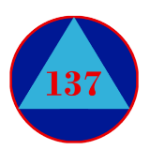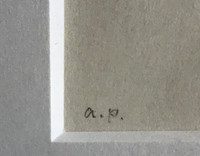
An Educated Collector is Our Best Client
In business for nearly two decades, we are a well established, popular contemporary art boutique specializing in expertly chosen, blue chip prints, multiples, uniques, books, ephemera and merchandise at different price points, with a focus on the secondary market. Please click on the "Contact Us" button at the bottom of this page for questions about any work, pricing and/or to arrange to visit our showroom/gallery - located in between Manhattan's Flatiron and Chelsea Flower Districts.
ALPHA 137 GALLERY
ALPHA 137 GALLERY
Description
Agnes Martin
On a Clear Day (one plate), 1973
This is a rare. poignant early 1970s pencil signed and annotated limited edition Agnes Martin silkscreen from the portfolio "On a Clear Day". It's a desirable Artist's Proof, one of only 14.
About On a Clear Day:
"Agnes Martin's monumental thirty-print suite, On a Clear Day, was produced near the end of a seven-year period (1967-1974) in which the artist ceased painting entirely. Living in self-imposed isolation on a lonely mesa in New Mexico to which she had escaped after several years in New York, years in which she had achieved both fame and critical success, and fleeing what she saw as the burden of endless distractions, inescapable impediments to the necessary clearing of her mind to achieve her goal of an "egoless" art embodying beauty, freedom, and happiness, she sought refuge in near-total seclusion. This enforced period of artistic inactivity and contemplation, part of the artist's rigorous path toward finding truth in her art, was finally broken in 1971, when Martin was invited to make the prints that would become, two years later, On a Clear Day. Indeed, shortly after completing the prints, she returned to painting, producing a steady stream of celebrated work until her death in 2004. As with all of her mature work, the prints of On a Clear Day take as their subject matter the grid, rendered with an astonishing diversity of expression, focused with severe rigor yet compositionally and interpretatively open. About her grids, Martin famously said, "My formats are square, but the grids never are absolutely square; they are rectangles . . . . When I cover the square surface with rectangles, it lightens the weight of the square, destroys its power." Elsewhere, she explained that the grid came to her as an inspiration. "I was thinking about innocence, and then I saw it in my mindthat grid . . . . So I painted it, and sure enough, it was innocent." Martin's grid of rectangles, as one critic noted, "eradicated the hierarchical balancing of parts. The effect was not only a surface in perfect equilibrium, but one that epitomized unity and wholeness." While her grid was early on interpreted as a purified analog of nature, Martin vigorously rejected this reading. "My work is anti-nature," she declared. "[It] is about emotionnot personal emotion [but] abstract emotion. It's about those subtle moments of happiness we all experience." She succinctly defined art as "the concrete representation of our most subtle feelings." Grander in conception than any of Martin's paintings, On a Clear Day condenses through multiplication thirty ways of constructing a grid, of expressing happiness, beauty, freedom, and the impossibility of, though yearning for, perfection. Its individual parts, recalling the number of days in a month, imply the passage of time. Its title declares the long-sought-for clarity the artist had struggled to find in the barren New Mexican desert. One of the great works of graphic art of the late twentieth century, On a Clear Day announces with luminous clarity and conviction Martin's return to aesthetic wholeness. LACMA's collection includes the painting Untitled V (1981) and the drawing Not the One (1966) by Martin, who is one of the most important figures of postwar American art"
- Kevin Salatino, Curator, Prints and Drawings, Guggenheim (2008)
https://www.guggenheim.org/audio/track/agnes-martin-on-a-clear-day-1973
The present work is elegantly matted and framed with UV plexiglass in accordance with the highest archival museum conservation standards.
Measurements:
Framed:
15.5 square inches
Sheet: 12 square inches















